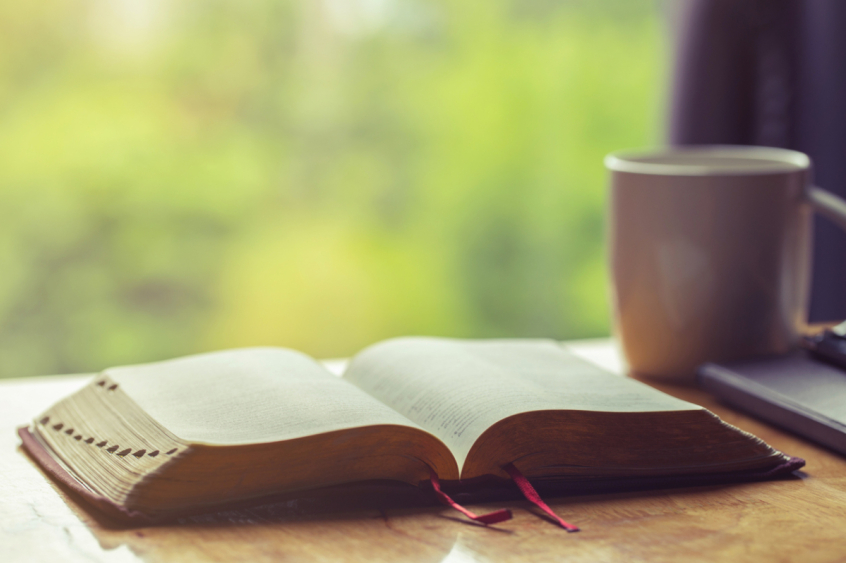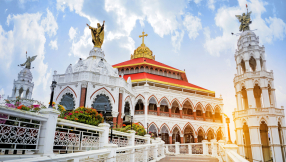
The Bible includes a number of female prophets. This is the story ...
Definition
In the Bible, prophets like Elijah, Isaiah, Jeremiah, Jonah and Daniel are well known. Many people are unaware that the Bible also includes female prophets. Depending on your version of the Bible they are called prophets or prophetesses. Some people prefer to call them 'women prophets' or 'female prophets', or they just use the same word 'prophet' for men and women alike. Although the Old Testament priesthood was restricted to men, the Old Testament has no such gender restriction for other leaders and prophets.
Female prophets in Jewish tradition
Traditionally the Jewish Talmud recognises seven women of the Hebrew Scriptures as prophets: Sarah, Miriam, Deborah, Hannah, Abigail, Huldah, and Esther. Three of these women, Miriam, Deborah and Huldah, are explicitly called prophets (or prophetesses) in the Bible. Additionally Miriam and Deborah are specifically called leaders. With the exception of Huldah, all these remain popular names for Christian and Jewish girls to this day.
Miriam
The first woman to be explicitly called a prophet in the Bible is Miriam, the sister of Moses. In Exodus 15:20 we read that 'the prophet Miriam, Aaron's sister, took a tambourine in her hand; and all the women went out after her with tambourines and with dancing' (NRSV). In Micah 6:4 it is written: 'I brought you out of Egypt; I rescued you from slavery; I sent Moses, Aaron, and Miriam to lead you' (GNB). So right from the beginning of the Law, there was a woman as a leader and prophet.
Deborah
In the early days of Israel before the kingdom, the tribes were ruled by Judges. The fourth Judge, and one of the greatest was Deborah. She was not only a Judge, but was also specifically called a prophet. In Judges 4:4 we read 'Deborah the wife of Lappidoth was a prophet and a leader of Israel during those days' (CEV).
Huldah
Huldah was a prophet in Jerusalem during the reign of King Josiah. She was a prophet alongside or overlapping with the prophets Jeremiah (Jeremiah 1:1-2) and Zechariah (Zephaniah 1:10). She held great respect and authority. Both the high priest Hilkiah and the king deferred to her on matters of religion (2 Kings 22:14), even over the other male prophets who existed at the time. Huldah recognised a scroll found in the Temple as a valid book of Scriptures, probably what we now know as Deuteronomy, so she helped to form the canon we have today (as told in 2 Kings chapter 22).
Anna
When Jesus is presented at the Temple as a baby, Mary and Joseph met Anna, who was an old widow in her eighties. She is specifically described as a prophet (Luke 2:36-38). The text implies that she was a prophet for many decades before she met the baby Jesus, which effectively puts her as a rare example of a documented prophet in the intertestamental period.
Were female prophets an exception?
Some people claim that female prophets were the exception. An exception requires a rule to vary from. Those who claim female prophets were the exception are assuming that there was a rule that the role of prophet was specifically male, in order to have exceptions from it. All the priests of Judaism were men, but there was never a rule restricting the role of prophet to men, and with no rule there are no exceptions to the rule. Rather, the story of Miriam shows us that from the beginning prophets could equally be male or female.
That there were fewer female prophets to male prophets simply reflects the patriarchal society. In a similar way, the UK has had fewer female monarchs and few female Prime Ministers. Most have been men, without any rule that the role was restricted to men.
Women at Pentecost
Only a small number of female prophets are named in the Old Testament. There may have been more who are unnamed and not mentioned. However, Joel predicted a time when female prophets would be more common, when he said: 'Your sons and daughters will prophesy' (Joel 2:28). This was quoted by Peter at Pentecost, and this only makes sense when you realise that both men and women (Acts 1:14) were speaking to the crowds (Acts 2:1-18). Peter regarded this as prophesying - otherwise he would not have quoted Joel to explain it.
Female Prophets in the Early Church
In the Early Church, we read that Luke and St Paul stayed with Philip the Evangelist in Caesarea. Philip was one of the seven deacons of the Jerusalem church. Luke notes that he and Paul met his four unmarried daughters who had the gift of prophecy (Acts 21:8-9).
In his first letter to the Corinthians Paul writes that 'Every man who prays or prophesies with his head covered dishonours his head, but every wife who prays or prophesies with her head uncovered dishonours her head...' (1 Corinthians 11:4-5 ESV). St Paul's objection was not to women prophesying, but to them doing it when their heads were not covered.
In Revelation, in instructions to the church in Thyatira (Rev. 2:18–29), there is criticism of a woman who calls herself a prophet, because she is deceiving people with immorality and eating food sacrificed to idols (Rev 2:20). The criticism is not for being a female leader, but for being an immoral leader.
Conclusion
When we think of the great prophets of the Bible most of them are men, and in an ancient patriarchal society maybe that is to be expected, but we should not overlook all the great female prophets too. The role of prophet was never restricted to men. There were female prophets in the Old Testament, at least one in the intertestamental period, and examples of women prophesying in the Early Church.













